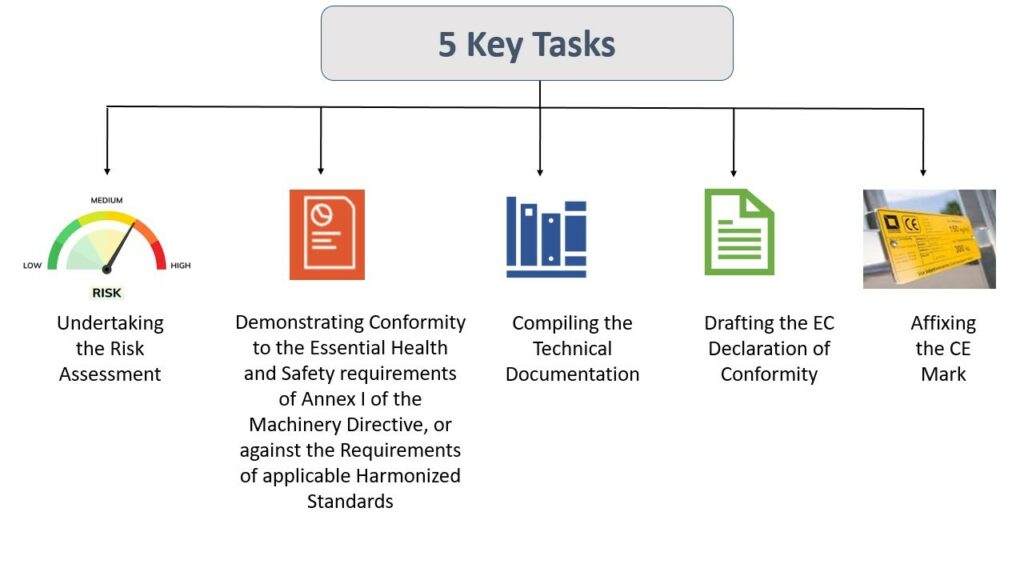CE Certification for Machinery
For machinery manufacturers, the most applicable directives are:
- The Machinery Directive 2006/42/ECC
- The Low Voltage Directive 2014/35/ECC
- The EMC Directive 2014/30/ECC
Most equipment falls under a ‘Self-Declaration Route’ where the manufacturer has to perform 5 key tasks.

For ‘High Risk’ equipment and for partly completed machinery, there are separate routes. After these tasks are completed, the product becomes eligible for CE marking.
Machinery Directive 2006/42/EC
The Machinery Directive 2006/42/EU is a set of requirements and processes that must be upheld by manufacturers and other economic operators. These set of product requirements are defined by Safety and Health Requirements. When the machinery complies with the mentioned set of requirements, the CE mark can be affixed and the machinery can be legally sold in the European market. The Machinery Directive applies to:
- Machinery (i.e. an assembly of linked parts, where at least one moves and is powered for a specific application)
- Installations,
- Interchangeable equipment,
- Safety components,
- Lifting accessories,
- Chains, ropes, and webbing (for lifting purposes),
- Removable mechanical transmission devices and,
- Partly completed machinery
The products excluded from Machinery Directive are:
- Agricultural and forestry tractors,
- Switchgear and,
- Machinery installed on seagoing vessels and mobile offshore units
Steps for CE Certification for Machinery
CE marking is concerned with:
- Risk Assessment of the product throughout its life-cycle.
- Meeting safety objectives through design and construction.
- Taking account of the ‘State of the Art’ of the product to ensure its safety.
- Collecting and retaining information about the design, testing, and construction process and the means by which product complies with the essential requirements of all relevant product safety Directives in a Technical File.
- Declaring the product’s conformity with all relevant product safety laws by means of a document i.e. Declaration of Conformity.
- Preparation of a comprehensive product user manual in the language of the end-user.

When Manufacturer Needs to Update CE?
Various situations which involve modifications to machinery require the manufacturer to update the CE Certificate. The instances are listed below:
- When Machinery is modified to the extent of being ‘new’ machinery.
- When Machinery is refurbished with a different safety package.
- In case an existing assembly of machines is modified.
- When the machinery is modified before it is first put into service.
